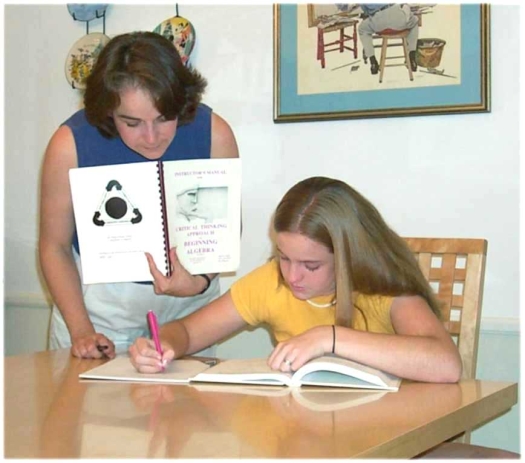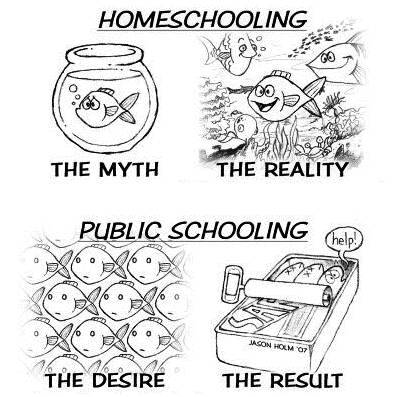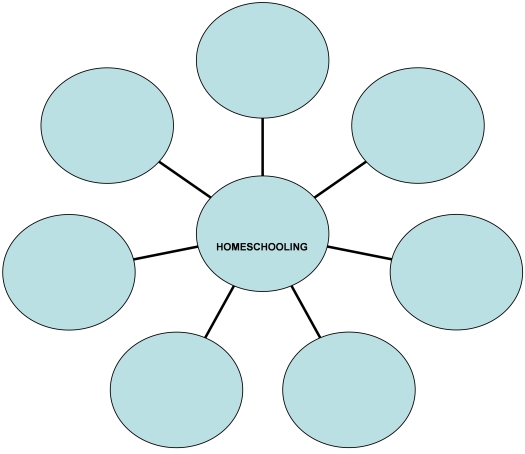
Pre-writing Strategies for the Persuasive Essay
Kader Demirci, Turkey
Kader Demirci is an instructor at Bahcesehir University, Istanbul. She holds a DELTA, and a Master’s degree in Public Relations and Publicity. She is interested in testing and assessment.
E-mail: kader.demirci@bahcesehir.edu.tr
Menu
Introduction
Activities
Conclusions
References
Appendix 1
Appendix 2
Appendix 3
Appendix 4
I believe that writing has the utmost importance in academic life since - compared to speaking - it is the tool most commonly used for students to be able to express themselves. However, students have come to “shy away” from writing in L2. As I have observed, the reason for this is not that they do not have the competence to produce the target texts rather they are not able to generate ideas using their knowledge, and support them with relevant examples, or more detailed information. Due to this, they tend to memorise texts rather than produce ideas of their own. However, no matter what their level is, they can generate as many ideas as possible on a given topic with activities relevant to them – i.e. they can personalise - build confidence about writing and believe that they are competent enough to write.
Given this, this lesson aims to:
- change students’ attitude towards writing through raising their awareness of various pre-writing strategies, and make them become aware that writing is a process,
- give them the opportunity to practise ways of generating and organising their ideas to make an outline of a persuasive essay, and
- highlight that identifying the audience and the purpose of the text is an important part the pre-writing stage.
- Lead-in:
- Teacher shows a picture to students to elicit “public schooling”, and asks them the advantages and disadvantages of public schooling. Then, she shows other pictures (showing homeschooling) to elicit the topic “homeschooling”. (See Appendix 1 for pictures.)
- Setting up the task and raising awareness:
- Teacher shows a caricature comparing public schooling with homeschooling, and asks them what they understand from the caricature. (See Appendix 1.) Teacher says “Homeschooling is becoming a trend in education around the world, and you want to inform people in Turkey about homeschooling. Imagine you are writing an article for Milliyet (a national newspaper). In this article your aim is to give advantages and disadvantages of homeschooling. You will be either for or against homeschooling.” (Note for the teacher: You can choose a newspaper or a magazine familiar to your learners, and set the target audience accordingly. The aim here is to make the task authentic so that the learners can internalise and get more cognitively engaged.)
- Teacher asks:
- “What is your aim in this article? (Expected answer: To persuade the readers to be either for or against homeschooling.
- Who is your audience? General public
- Do you think audience is important in writing? Why? Why not? Yes. Because we will generate ideas and produce the text accordingly.
(Note for the teacherThe aim in asking these questions is to raise learners’ awareness on the audience their article will address. This will help them both in the brainstorming stage (in determining the ideas they will include / prioritise) and in the production stage (in adjusting their language).
- The teacher says: “In this lesson, we will do some brainstorming activities on “homeschooling” to write an article to persuade our readers.”
- Generating ideas:
- Teacher says that they are going to generate ideas using brainstorming techniques. She distributes the brainstorming sheets to students. She gives each student a brainstorming sheet. The sheets have different patterns of organisation on them. (See Appendix 2 for brainstorming sheets.)
- First, she asks students to write two ideas about the topic individually. They can be positive or negative.
- Then, she pairs the students, and asks them to compare their ideas and add as many as they can.
- Teacher makes groups of two from two pairs and asks students to compare their lists and add different ideas to their lists.
- When students have finished, teacher asks them to organise their ideas: Teacher says, “Choose three negative and three positive ideas from their list, and rank them in order of importance.”
- Exchanging information and valuating:
- Teacher asks:
“Which brainstorming technique have you used? Did you like them? Are you going to use them in the future? How did it help you?”
- Organising ideas:
- Teacher tells students that each group is going to choose two ideas from their list by discussing.
- Teacher draws a chart on the board and puts the title PROS for one column and CONS for the other.
- Teacher asks each group to choose a representative to write their ideas on the board under the correct heading.
- Teacher goes over the list with the class.
- Outlining:
- Teacher asks students to get back to their pairs and gives each pair an outline sheet. (See Appendix 3.), and asks students to fill in the outline sheets in pairs using the ideas they have generated.
- Follow-up activity: In the following lesson, teacher asks students to write the first draft of their essay (See Appendix 4).
Students learning English to master their academic studies not only need to improve their grammar and vocabulary knowledge, and reading and listening skills but also integrate all to be efficient writers of English since I believe that writing is the skill a student’s academic survival depends on. Given the needs of the learners, this lesson may allow learners to become aware of the significance of brainstorming in writing as most of the time learners tend to start writing immediately after reading the task rubric. To be good writers, they also need to raise awareness on the audience and the purpose of the text they are to produce. Thus, this lesson can help them experience the stages and strategies of good writing especially at the pre-writing stage.
Hedge, T. (2000). Teaching and Learning in the Language Classroom. Oxford: OUP.
Ferris, D. & Hedgcock, J. S. (1998). Teaching ESL Composition: Purpose, Process, and Practice. New Jersey: Lawrence Erlbaum Associates Publishers.
Grabe, W. & Kaplan. R. B. (1998). Theory and Practice of Writing. NY: Longman. OUP.
Hedge, T. (2005). Writing. Oxford: OUP.
Raimes, A. (1987). Exploring Through Writing: A Process Approach to ESL Composition. NY: St. Martin’s Press.
Richards, J. C. & Renandya, W. A. (2002). Methodology in Language Teaching. Cambridge: CUP.
Tribble, C. (2006). Writing. Oxford: OUP.
Websites
www.medyaline.com/haberresim/milliyet.jpg
http://4.bp.blogspot.com/_Va-G0Ykb13I/SihFnBMhebI/AAAAAAAAA4E/kqV4J7HjCEA/s400/devlet+okulu.jpg
www.speakbindas.com/wp-content/uploads/2009/02/homeschooling2.jpg
www.homeschool-curriculum.org/images/homeschoolinggirlhomework.jpg
http://gabriella50.files.wordpress.com/2009/11/homeschooling-1.gif

Picture 1
http://4.bp.blogspot.com/_Va-G0Ykb13I/SihFnBMhebI/AAAAAAAAA4E/kqV4J7HjCEA/s400/devlet+okulu.jpg

Picture 2
www.speakbindas.com/wp-content/uploads/2009/02/homeschooling2.jpg

Picture 3
www.homeschool-curriculum.org/images/homeschoolinggirlhomework.jpg

Caricature
http://gabriella50.files.wordpress.com/2009/11/homeschooling-1.gif

TASK: Imagine you are a journalist and working for Milliyet. In your article you want to write about the advantages and disadvantages of homeschooling and persuade your readers to be for or against homeschooling. Write an article of about 350-400 words.
BRAINSTORMING
(Created by the teacher)

(Created by the teacher)

OUTLINING
INTRODUCTION
Thesis statement: _________________________________________________________
BODY
Pro argument 1: ___________________________________________________________
Supporting idea 1: _________________________________________________________
Supporting idea 2 _________________________________________________________
Pro argument 2 ___________________________________________________________
Supporting idea 1: _________________________________________________________
Supporting idea 2 _________________________________________________________
Con argument & refutation:
Con argument : ___________________________________________________________
Refutation: _______________________________________________________________
Supporting idea for refutation: ________________________________________________
CONCLUSION
Restatement of the thesis: ___________________________________________________
Comments & suggestions: ___________________________________________________ |
(Created by the teacher)

DRAFTING
Using the outline above, write the first draft of your article below. (About 300 words.)
____________________________________________________________________
____________________________________________________________________
____________________________________________________________________
____________________________________________________________________
____________________________________________________________________
____________________________________________________________________
____________________________________________________________________
____________________________________________________________________
____________________________________________________________________
____________________________________________________________________
____________________________________________________________________
____________________________________________________________________
____________________________________________________________________
____________________________________________________________________
____________________________________________________________________
____________________________________________________________________
____________________________________________________________________
____________________________________________________________________
(Created by the teacher)

Please check the Methodology and Language for Secondary Teachers course at Pilgrims website.
Please check the Teaching Advanced Students course at Pilgrims website.
Please check the Creative Methodology for the Classroom course at Pilgrims website.


|